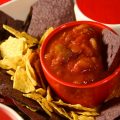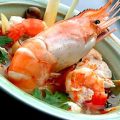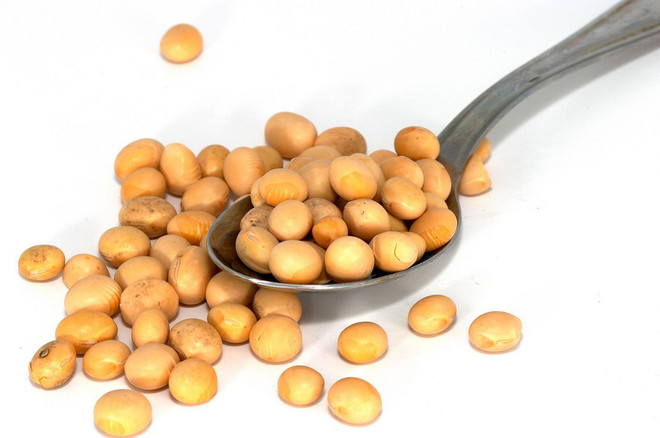 Chinese Cuisine RecipesChinese Beanthe family is actually large - these are mung beans, azuki beans, broad beans, peas and many other species, and all of them are used in Chinese cooking in one way or another. But none of the legume family can compare in importance with soybeans, which the Chinese call the Great Bean. And this is not an exaggeration - in the Chinese food system, soybeans occupy an honorable third place after rice and wheat. Soybeans differ from their legume relatives in their lower carbohydrate content, but at the same time they are much richer in protein and oils, which from the point of view of dietary nutrition makes soybeans a democratic source of nutrients. After all, the content of proteins and calcium in them is much higher than in natural meat or natural dairy products. The largest consumption of soybeans falls to the lot of vegetarians, but people with other dietary principles also eat soybeans in one form or another every day. Soy sauce alone - a seasoning that plays a key role in Chinese cuisine, and is consumed in fairly large quantities per capita. And then there is soy milk, soy flour, soy curd... At the dawn of its history, three thousand years ago, soy was just a humble stepdaughter of wheat and millet. It was considered a kind of fertilizer that improved the nitrogen-poor soils on which grain crops were sown. It took people a whole millennium to discover the princess in this Cinderella and understand its true nutritional value. The long history of soy, which has not ended and is still being written today, has given the world many varieties of soy that can grow in almost any soil and tolerate almost any weather conditions. Like grain crops, soy is harvested when its seeds (beans) are fully ripe, dry and hard. Soybeans are usually divided into several main subspecies depending on the color of the beans: green, black and yellow soybeans. During the Zhou Dynasty (1050 - 256 BC), soybeans were named one of the five sacred grains, including wheat, barley, rice and millet. At that time, soybeans were known as "shu", mature beans were fried and eaten whole, and the leaves were also eaten. But then, soybeans were not considered a delicacy at all, at that time, millet was considered the privileged grain, followed by rice and wheat, and soybeans were in fourth place.
Chinese Cuisine RecipesChinese Beanthe family is actually large - these are mung beans, azuki beans, broad beans, peas and many other species, and all of them are used in Chinese cooking in one way or another. But none of the legume family can compare in importance with soybeans, which the Chinese call the Great Bean. And this is not an exaggeration - in the Chinese food system, soybeans occupy an honorable third place after rice and wheat. Soybeans differ from their legume relatives in their lower carbohydrate content, but at the same time they are much richer in protein and oils, which from the point of view of dietary nutrition makes soybeans a democratic source of nutrients. After all, the content of proteins and calcium in them is much higher than in natural meat or natural dairy products. The largest consumption of soybeans falls to the lot of vegetarians, but people with other dietary principles also eat soybeans in one form or another every day. Soy sauce alone - a seasoning that plays a key role in Chinese cuisine, and is consumed in fairly large quantities per capita. And then there is soy milk, soy flour, soy curd... At the dawn of its history, three thousand years ago, soy was just a humble stepdaughter of wheat and millet. It was considered a kind of fertilizer that improved the nitrogen-poor soils on which grain crops were sown. It took people a whole millennium to discover the princess in this Cinderella and understand its true nutritional value. The long history of soy, which has not ended and is still being written today, has given the world many varieties of soy that can grow in almost any soil and tolerate almost any weather conditions. Like grain crops, soy is harvested when its seeds (beans) are fully ripe, dry and hard. Soybeans are usually divided into several main subspecies depending on the color of the beans: green, black and yellow soybeans. During the Zhou Dynasty (1050 - 256 BC), soybeans were named one of the five sacred grains, including wheat, barley, rice and millet. At that time, soybeans were known as "shu", mature beans were fried and eaten whole, and the leaves were also eaten. But then, soybeans were not considered a delicacy at all, at that time, millet was considered the privileged grain, followed by rice and wheat, and soybeans were in fourth place.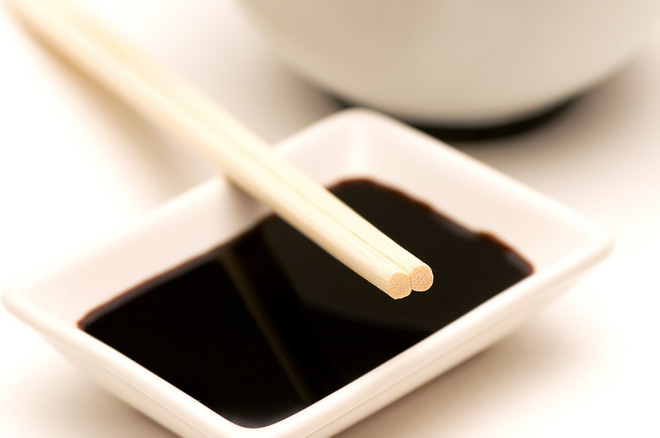 Soybeans were originally grown in the northeastChina - in Manchuria, the spread to the rest of China was comparatively slow. By the first centuries of our era, soybeans reached central China, then its southern provinces, crossed the border and took root in Korea. Shortly before the arrival of Europeans in the 16th century, soybeans began to be grown in Japan and Southeast Asia ... Soybeans contain unique complete proteins, almost as nutritious and nutritional value as animal proteins, extraordinary oil, including components close to fish lipids and a magnificent ensemble of completely unique biologically active components, including lecithin and choline, essential in nutrition, vitamins B, B and E, macro- and microelements and a number of other substances, and it does not contain cholesterol and lactose. Why did it take so much time to notice and appreciate all these advantages of the uncrowned queen? There were at least two obstacles. Firstly, the very taste of the cooked beans. Even after very long cooking, soybeans remain hard and bitter. Secondly, whole soybeans are poorly digested by the stomach. This fact explains why today, compared to other beans, beans and peas, soybeans are rarely eaten whole. Only generations later, people learned to extract all the useful substances from soybeans, especially protein, but this required improving the methods of processing soybeans. And one of the first such methods was the production of soy milk. Soy milk is essentially boiled and pureed soybeans. To this day, China continues to produce this product in a simple "great-grandfather's" way, except that they sweeten or salt it. Although soy milk resembles cow's milk (or other animal milk) in consistency, their tastes are completely different, and of course, soy milk can in no way replace natural milk, and especially mother's milk. In China, soy milk is usually served with breakfast. Another method of pre-processing soybeans to make them more digestible for the human body is fermentation. The first known fermented soy product in history was salted black beans. This was a major advance in human nutrition and also improved the taste of soybeans. It is not known whether this method was discovered by chance or not, but it was discovered sometime between 206 BC and 220 AD. Salted black beans (the black color in this case is the result of a fermentation process) used in Chinese cuisine today are very similar in production to the original method that began in the early BC.
Soybeans were originally grown in the northeastChina - in Manchuria, the spread to the rest of China was comparatively slow. By the first centuries of our era, soybeans reached central China, then its southern provinces, crossed the border and took root in Korea. Shortly before the arrival of Europeans in the 16th century, soybeans began to be grown in Japan and Southeast Asia ... Soybeans contain unique complete proteins, almost as nutritious and nutritional value as animal proteins, extraordinary oil, including components close to fish lipids and a magnificent ensemble of completely unique biologically active components, including lecithin and choline, essential in nutrition, vitamins B, B and E, macro- and microelements and a number of other substances, and it does not contain cholesterol and lactose. Why did it take so much time to notice and appreciate all these advantages of the uncrowned queen? There were at least two obstacles. Firstly, the very taste of the cooked beans. Even after very long cooking, soybeans remain hard and bitter. Secondly, whole soybeans are poorly digested by the stomach. This fact explains why today, compared to other beans, beans and peas, soybeans are rarely eaten whole. Only generations later, people learned to extract all the useful substances from soybeans, especially protein, but this required improving the methods of processing soybeans. And one of the first such methods was the production of soy milk. Soy milk is essentially boiled and pureed soybeans. To this day, China continues to produce this product in a simple "great-grandfather's" way, except that they sweeten or salt it. Although soy milk resembles cow's milk (or other animal milk) in consistency, their tastes are completely different, and of course, soy milk can in no way replace natural milk, and especially mother's milk. In China, soy milk is usually served with breakfast. Another method of pre-processing soybeans to make them more digestible for the human body is fermentation. The first known fermented soy product in history was salted black beans. This was a major advance in human nutrition and also improved the taste of soybeans. It is not known whether this method was discovered by chance or not, but it was discovered sometime between 206 BC and 220 AD. Salted black beans (the black color in this case is the result of a fermentation process) used in Chinese cuisine today are very similar in production to the original method that began in the early BC. Fermented black beans have arrivedpredecessors of another extremely common soy product – soy sauce. In fact, soy sauce is their liquid equivalent. There is a saying in China: “What a person cannot do without for a single day is firewood, rice, vegetable oil, salt, soy sauce, vinegar and tea.” Such great importance in a person’s daily life still needs to be earned, and fermented soy in the form of sauce has successfully achieved this. At least in the life of the Chinese people. If you buy soy sauce directly in China, then on the bottle with the sauce you will see the following inscription – “Jiang you”, which literally translates as… oil sauce. But if you have ever tried soy sauce in your life, then you can say with confidence that it does not look like oil at all, and its structure is by no means oily. To understand this apparent confusion, you need to turn to Chinese history and Chinese etymology at the same time. In ancient times, the word "jiang" was used to refer to absolutely all fermented sauces, regardless of what product they were made from. However, during the Song Dynasty (960-1279 AD), the word "jiang" began to refer exclusively to soy sauces. The word "you" in Chinese usually means vegetable oil, any vegetable oil. BUT... Ancient sauce makers meant by this word what we know as an extract, an extract in a general sense. Thus, it turns out that "Jiang you" is not just some kind of oil sauce, but a fermented sauce extracted from soybeans. The exact date of soy sauce is unknown. But history shows that already during the Song Dynasty, soy sauce was one of the most important seasonings in Chinese cuisine, and it was during these times that the above expression about everyday things was born. And it is certainly known that the invention of soy sauce changed Chinese cuisine once and for all. The process of obtaining soy sauce is very complex, it can take from six months to two years. It is worth remembering that soy sauce is very salty, so if you are preparing a dish that includes it, then using salt will be unnecessary. By the way, this is the reason why salt is less important in Chinese cuisine than in other national cuisines. Soy sauce is often used as a preservative in Chinese cooking. By consuming soy sauce every day, the Chinese provide their bodies with riboflavin, vitamin B6, magnesium, copper, protein, iron, phosphorus, manganese and niacin. So, maybe it is worth following the example of the wise Chinese and partially replacing salt with soy sauce?
Fermented black beans have arrivedpredecessors of another extremely common soy product – soy sauce. In fact, soy sauce is their liquid equivalent. There is a saying in China: “What a person cannot do without for a single day is firewood, rice, vegetable oil, salt, soy sauce, vinegar and tea.” Such great importance in a person’s daily life still needs to be earned, and fermented soy in the form of sauce has successfully achieved this. At least in the life of the Chinese people. If you buy soy sauce directly in China, then on the bottle with the sauce you will see the following inscription – “Jiang you”, which literally translates as… oil sauce. But if you have ever tried soy sauce in your life, then you can say with confidence that it does not look like oil at all, and its structure is by no means oily. To understand this apparent confusion, you need to turn to Chinese history and Chinese etymology at the same time. In ancient times, the word "jiang" was used to refer to absolutely all fermented sauces, regardless of what product they were made from. However, during the Song Dynasty (960-1279 AD), the word "jiang" began to refer exclusively to soy sauces. The word "you" in Chinese usually means vegetable oil, any vegetable oil. BUT... Ancient sauce makers meant by this word what we know as an extract, an extract in a general sense. Thus, it turns out that "Jiang you" is not just some kind of oil sauce, but a fermented sauce extracted from soybeans. The exact date of soy sauce is unknown. But history shows that already during the Song Dynasty, soy sauce was one of the most important seasonings in Chinese cuisine, and it was during these times that the above expression about everyday things was born. And it is certainly known that the invention of soy sauce changed Chinese cuisine once and for all. The process of obtaining soy sauce is very complex, it can take from six months to two years. It is worth remembering that soy sauce is very salty, so if you are preparing a dish that includes it, then using salt will be unnecessary. By the way, this is the reason why salt is less important in Chinese cuisine than in other national cuisines. Soy sauce is often used as a preservative in Chinese cooking. By consuming soy sauce every day, the Chinese provide their bodies with riboflavin, vitamin B6, magnesium, copper, protein, iron, phosphorus, manganese and niacin. So, maybe it is worth following the example of the wise Chinese and partially replacing salt with soy sauce?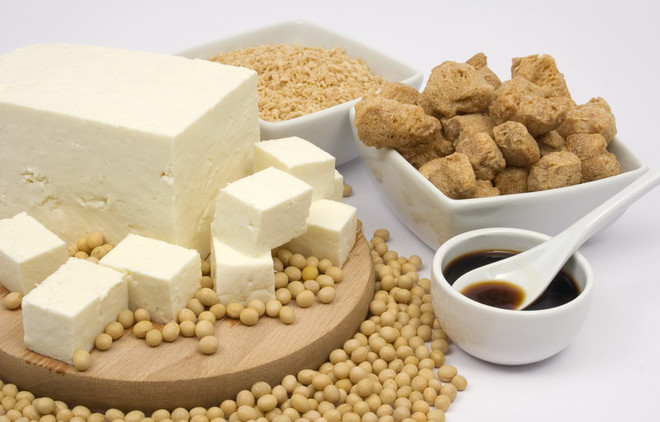 Soybeans are rich in protein and many usefulвеществами и витаминами, но чего в них не хватает для исключительного набора полезности, так это витамина С. Впрочем, природа совсем не обделила сою этим витамином, только дала его не бобам, а росткам, которые, кстати, очень легко получить в домашних условиях. Способ проращивания сои следующий: берут глиняный сосуд (можно взять обыкновенный цветочный горшок или банку с отверстием в дне), где постилается кусок полотна. В этот сосуд помещается требуемое количество бобов, предварительно вымытых и замоченных в течение 6 часов в холодной воде, и сверху закрывается ветошкой для защиты от света. Далее бобы поливаются два раза в сутки, а в летнее время 3 раза. Зимой поливать хорошо более теплой водой и держать в теплом месте. Проращивание заканчивается летом через 3-5 дней, а зимой до 15 дней. Готовыми считаются ростки, когда они достигают длины 4-5 см. При употреблении семядоли ростков удаляются, они в пищу не идут. Слишком длинные ростки волокнисты и не столь питательны и вкусны. Ростки бобов идут в пищу как приправа к супам, иногда варятся в небольшом количестве воды с добавлением соуса сои или поджариваются. Из соевых ростков можно приготовить различного сорта салаты с разными приправами. Соевые ростки всегда предварительно обдаются кипятком. Тепловая обработка увеличивает питательную ценность ростков и, к тому же, делает их более приятными на вкус.Соевые ростки полезны в любое время года, но зимой они становятся практически незаменимы, особенно в тех регионах, где зимы продолжительные и холодные. Например, в районах северного Китая, где даже сегодня зимой бывает сложно достать свежие фрукты и овощи, соевые ростки помогают поддерживать баланс витаминов.Но сою выращивают не только из-за того, что это дешевый способ получить большое количество высококачественного белка. Соя – столь же хороший источник растительного масла. Соевые бобы содержат на несколько процентов больше масла, чем их ближайшие родственники, например, в горохе содержится всего 5% масла, а в сое – около 18%. довольно популярно во всем мире, в китайской же кулинарии оно занимает второе место после рапсового (третье место отдано арахисовому маслу).Как уже было сказано, китайцы обычно не едят соевые бобы целиком. Но это относится только к зрелым, высохшим на стебле и в стручках бобам. Зрелые, но все еще зеленые бобы, которые не успели высохнуть, могут употребляться в пищу в целом виде, поскольку более приемлемы для желудка, чем полностью вызревшие бобы. Но не все сорта и виды сои подходят для этих целей. Бобы, которые без ущерба для самочувствия можно употреблять в пищу, называют едамаме (edamame), словом японского происхождения. Едамаме жарят, тушат как обычные овощи, едят как закуску прямо в стручках. Пряная версия такой закуски (с черным перцем, чесноком и анисом) очень популярна в тайваньских чайных магазинах.Ну и, конечно, говоря о сое, нельзя не сказать хотя бы несколько слов о тофу, или доуфу, – соевом твороге. Подробнее мы поговорим о нем в другой раз, а сейчас лишь скажем, что доуфу окончательно утвердил сою в качестве одного из важнейших элементов китайской кухни. Ученые полагают, что первый доуфу был получен в результате добавления соли в соевое молоко. В китайской кулинарии доуфу играет ту же роль, что мясо и молочные продукты в других национальных кухнях. Любой китайский повар знает, как приготовить большое разнообразие восхитительных блюд из этого шелковистого белого творога.
Soybeans are rich in protein and many usefulвеществами и витаминами, но чего в них не хватает для исключительного набора полезности, так это витамина С. Впрочем, природа совсем не обделила сою этим витамином, только дала его не бобам, а росткам, которые, кстати, очень легко получить в домашних условиях. Способ проращивания сои следующий: берут глиняный сосуд (можно взять обыкновенный цветочный горшок или банку с отверстием в дне), где постилается кусок полотна. В этот сосуд помещается требуемое количество бобов, предварительно вымытых и замоченных в течение 6 часов в холодной воде, и сверху закрывается ветошкой для защиты от света. Далее бобы поливаются два раза в сутки, а в летнее время 3 раза. Зимой поливать хорошо более теплой водой и держать в теплом месте. Проращивание заканчивается летом через 3-5 дней, а зимой до 15 дней. Готовыми считаются ростки, когда они достигают длины 4-5 см. При употреблении семядоли ростков удаляются, они в пищу не идут. Слишком длинные ростки волокнисты и не столь питательны и вкусны. Ростки бобов идут в пищу как приправа к супам, иногда варятся в небольшом количестве воды с добавлением соуса сои или поджариваются. Из соевых ростков можно приготовить различного сорта салаты с разными приправами. Соевые ростки всегда предварительно обдаются кипятком. Тепловая обработка увеличивает питательную ценность ростков и, к тому же, делает их более приятными на вкус.Соевые ростки полезны в любое время года, но зимой они становятся практически незаменимы, особенно в тех регионах, где зимы продолжительные и холодные. Например, в районах северного Китая, где даже сегодня зимой бывает сложно достать свежие фрукты и овощи, соевые ростки помогают поддерживать баланс витаминов.Но сою выращивают не только из-за того, что это дешевый способ получить большое количество высококачественного белка. Соя – столь же хороший источник растительного масла. Соевые бобы содержат на несколько процентов больше масла, чем их ближайшие родственники, например, в горохе содержится всего 5% масла, а в сое – около 18%. довольно популярно во всем мире, в китайской же кулинарии оно занимает второе место после рапсового (третье место отдано арахисовому маслу).Как уже было сказано, китайцы обычно не едят соевые бобы целиком. Но это относится только к зрелым, высохшим на стебле и в стручках бобам. Зрелые, но все еще зеленые бобы, которые не успели высохнуть, могут употребляться в пищу в целом виде, поскольку более приемлемы для желудка, чем полностью вызревшие бобы. Но не все сорта и виды сои подходят для этих целей. Бобы, которые без ущерба для самочувствия можно употреблять в пищу, называют едамаме (edamame), словом японского происхождения. Едамаме жарят, тушат как обычные овощи, едят как закуску прямо в стручках. Пряная версия такой закуски (с черным перцем, чесноком и анисом) очень популярна в тайваньских чайных магазинах.Ну и, конечно, говоря о сое, нельзя не сказать хотя бы несколько слов о тофу, или доуфу, – соевом твороге. Подробнее мы поговорим о нем в другой раз, а сейчас лишь скажем, что доуфу окончательно утвердил сою в качестве одного из важнейших элементов китайской кухни. Ученые полагают, что первый доуфу был получен в результате добавления соли в соевое молоко. В китайской кулинарии доуфу играет ту же роль, что мясо и молочные продукты в других национальных кухнях. Любой китайский повар знает, как приготовить большое разнообразие восхитительных блюд из этого шелковистого белого творога. Another amazing product, bornindebted to the ingenuity of the Chinese, - soy meat. When two Indian Buddhists arrived in China two thousand years ago and brought the teaching of the virtues of Lenten food, they found grateful listeners in the Chinese people. Meat was a luxury in China, and peasants could rarely afford it. It was on this basis that the great Chinese art of gastronomic deception was born - soy in the hands of skilled cooks can easily "turn" not only into meat, but also into fish. A vegetarian in China practically does not feel deprived of anything. He can enjoy delicious chicken legs or cutlets without remorse, knowing that there is nothing chicken in these cutlets except the taste. False meat is very popular in the East, in vegetarian restaurants and temple kitchens of China and Taiwan it is even one of the main components of the diet. Soybeans in Chinese culture are not just a culinary ingredient, but also a medicine. The Chinese learned about its medicinal properties almost immediately after they turned their attention to it, because one of the principles of Chinese cooking is the health benefits of any food consumed. Soybeans were used to treat the heart, liver, kidneys, intestines and other organs. Compared to other countries, and especially Europe and both Americas, the percentage of cardiovascular diseases, hypertension, diabetes and other diseases in China is significantly lower.
Another amazing product, bornindebted to the ingenuity of the Chinese, - soy meat. When two Indian Buddhists arrived in China two thousand years ago and brought the teaching of the virtues of Lenten food, they found grateful listeners in the Chinese people. Meat was a luxury in China, and peasants could rarely afford it. It was on this basis that the great Chinese art of gastronomic deception was born - soy in the hands of skilled cooks can easily "turn" not only into meat, but also into fish. A vegetarian in China practically does not feel deprived of anything. He can enjoy delicious chicken legs or cutlets without remorse, knowing that there is nothing chicken in these cutlets except the taste. False meat is very popular in the East, in vegetarian restaurants and temple kitchens of China and Taiwan it is even one of the main components of the diet. Soybeans in Chinese culture are not just a culinary ingredient, but also a medicine. The Chinese learned about its medicinal properties almost immediately after they turned their attention to it, because one of the principles of Chinese cooking is the health benefits of any food consumed. Soybeans were used to treat the heart, liver, kidneys, intestines and other organs. Compared to other countries, and especially Europe and both Americas, the percentage of cardiovascular diseases, hypertension, diabetes and other diseases in China is significantly lower.

Making Money with Desserts: Success Stories
Evgeniya Polischuk (Fedutinova) instagram:@evgeniyafedutinovavk.com/janeshomebaking– It all started with baking for family and friends. Gradually, I started posting photos of my baked goods on Instagram – and orders started coming in. I made my first custom-made cake on October 13, 2014, and a little earlier I started making macaroons and cupcakes. You could say that the business “found me”, I am very […]

Soups are cold recipes with photos
Cold cucumber soup with yogurt and lemonsorbet from the chef of the restaurant La Taverna Alexander Zhurkin Photo: Getty Images Ingredients: Plain yoghurt – 125 g Cucumber – 150 g Lemon/lime sorbet – 50 g Cocktail shrimp – 24 g Fresh ginger juice – 1 g Lime juice – 5 g Fresh orange juice – 5 g Parsley – 1 g Pink pepper – 1 g Watercress – […]

barbeque kebab
Pork tenderloin in glaze Photo:Dmitry Bayrak/dbstudioPreparation time: 20 minutes + marinating time.Calories: 454 kcal per serving.For 4 servings: 4 pork tenderloins (approximately 300 g each), 1 onion, 2 cloves of garlic, 1 tsp. lemon zest, 1 tsp. lemon juice, a pinch of ground cumin, coriander and turmeric, 1 tbsp. vegetable […]

Pierre Duacan: dietary recipes: Ducane diet
Beetroot soup Photo:Season’S, Luxury Hotels RepresentationYou will need:· Boiled beetroot – 60 g· Fresh cucumbers – 20 g· Red radish – 20 g· Green onions – 10 g· Egg – 1 pc.· Drinking mineral water – 200 g· Salt – 1 gPreparation:· Boil the egg and beetroot.· Grate the cucumbers, radish and part of the beetroot. Put everything […]
